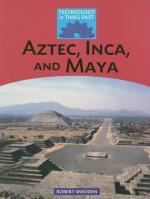|
This section contains 4,221 words (approx. 15 pages at 300 words per page) |

|
The ordered Incan society was important in the empire's ability to keep its economy healthy. Each social class— emperor, aristocrat, and commoner—had its duties and its obligations. To ensure that these obligations were met, commands and authority flowed from the top (the Sapa Inca), through the layers of bureaucrats (members of the nobility), and down to the common people. This tight management led to a well-controlled economy and the empire's wealth.
Incan Economy
The Incas had a moneyless economy: They had no coins or any other form of currency. Instead, they had what scholars call reciprocity; that is, goods were exchanged for work or vice versa. When the emperor wished to reward an imperial official or an army officer for serving the empire, he gave them jewelry, fine textiles, weapons, livestock, land, and even women to be secondary wives. Commoners, working...
|
This section contains 4,221 words (approx. 15 pages at 300 words per page) |

|




